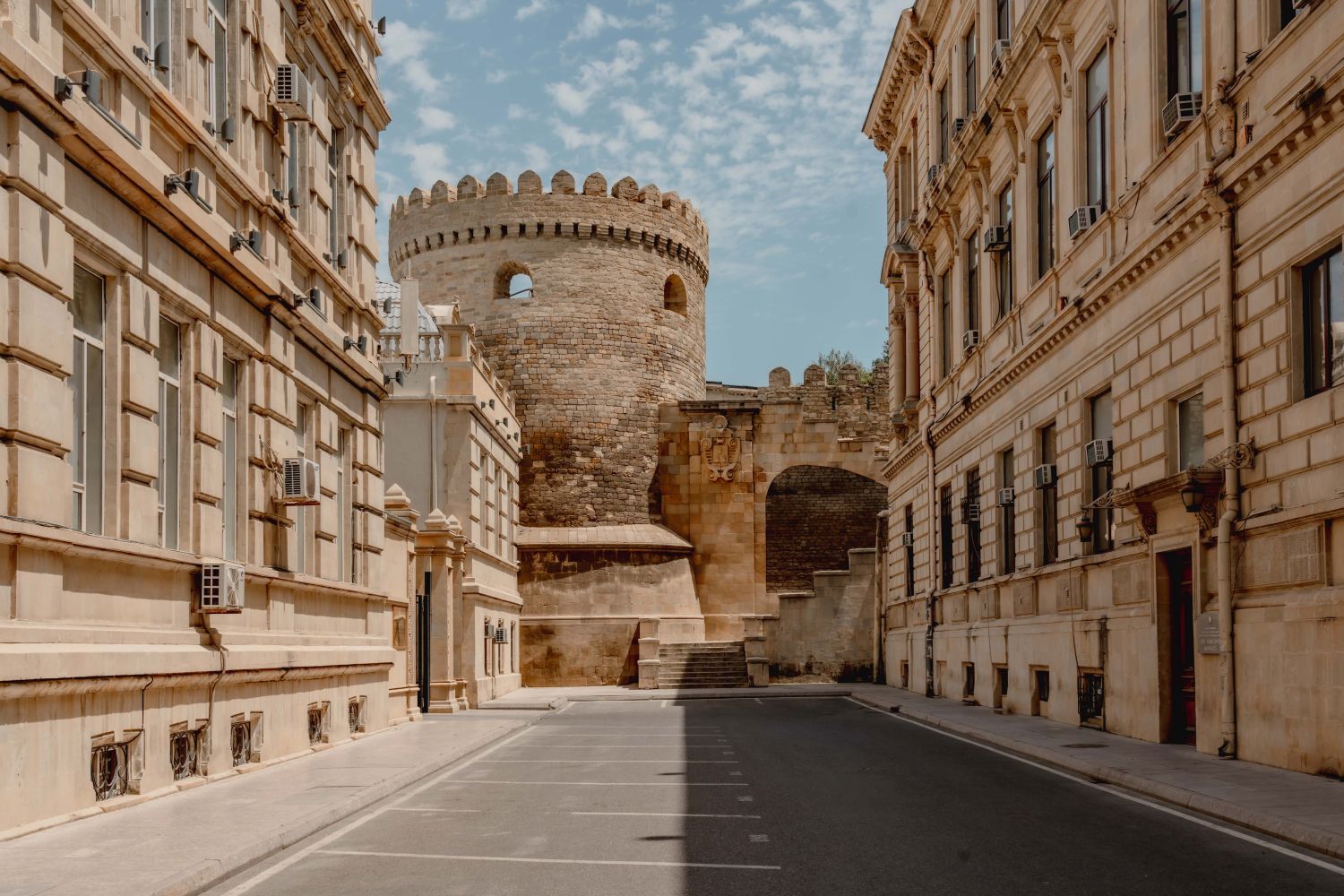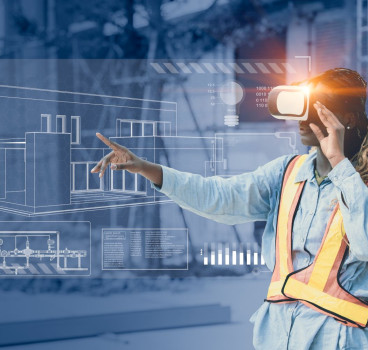Predictive maintenance for heritage buildings and the digital preservation paradox
human history and architectural evolution, presents a complex and enduring challenge. These structures, often centuries old, are inherently susceptible to decay, structural fatigue and environmental degradation, demanding constant vigilance and costly interventions. For too long, the approach to their maintenance has largely been reactive - responding to visible damage after it has occurred, a method that is not only expensive, but often insufficient to prevent irreversible loss, writes John Ridgeway.
However, a major move is now underway, driven by the convergence of advanced technology and a renewed imperative for proactive asset management. Predictive maintenance, powered by artificial intelligence and sophisticated sensor arrays, offers a transformative pathway to extend the life of these historic structures. Yet, this technological promise simultaneously ushers in a complex ethical dilemma - the digital preservation paradox, forcing a critical examination of how we define and safeguard the authenticity of our past when it is rendered in bytes and pixels.
Traditional heritage maintenance has been characterised by its reactive nature. Interventions typically occur in response to problems such as a visible crack in a masonry wall, the unmistakable smell of damp, or the sudden failure of an aging component. This approach is fraught with inefficiencies. Deterioration often progresses silently, unseen, until damage is extensive, requiring far more invasive, costly and potentially disruptive repairs.
Moreover, the unique construction methods, bespoke materials and often delicate finishes of heritage buildings mean that repair work itself can be challenging, requiring highly specialised skills and materials that are difficult to source. The inherent vulnerabilities of these structures - their exposure to long-term climate impacts, the subtle stresses of urban vibration, or the insidious creep of moisture - make a purely responsive strategy economically unsustainable and culturally perilous. Preserving these irreplaceable assets demands a more intelligent, forward-thinking methodology.
This is where the revolution of predictive maintenance fundamentally redefines the approach to historic asset management. At its core, predictive maintenance uses continuous data collection and advanced analytics to anticipate potential failures or deterioration before they become critical problems. For heritage buildings, this translates to a proactive strategy that significantly extends lifespan, optimises resource allocation and delivers substantial cost efficiencies over the long term. This system relies on a sophisticated network of sensors strategically embedded within or mounted upon the structure, constantly monitoring a wide array of environmental and structural parameters.
Sensor technologies
These sensor technologies are the eyes and ears of the predictive maintenance system. Environmental sensors continuously track humidity, temperature and light levels, crucial for monitoring the stability of sensitive materials like timber, frescoes and textiles. Structural sensors, including strain gauges and accelerometers, detect minute movements, vibrations, and crack propagation within ancient masonry or timber frames, providing early warnings of structural shifts. Material degradation sensors, such as sophisticated moisture probes, can identify the onset of damp and rot long before it is visible, enabling targeted intervention to prevent widespread decay. Even less obvious threats, like pest infestations, can be detected through subtle environmental changes or even acoustic signatures. The data stream generated by these sensors is vast, continuous and would overwhelm human analysis.
This is where artificial intelligence and advanced data analytics come into play. AI algorithms process this colossal inflow of sensor data, identifying subtle anomalies, recognising patterns indicative of impending issues and predicting future deterioration rates with remarkable accuracy. Rather than relying on periodic, subjective human inspections, which can miss early indicators, the AI system operates tirelessly, providing objective, data-driven insights.
It can differentiate between normal structural movement and incipient failure, or identify environmental conditions that, if left unchecked, would lead to irreversible damage. The benefits are enormous where interventions become highly targeted, enabling precise repairs that minimise disruption and cost, extending the operational life of the asset - and ultimately safeguarding the cultural integrity of the heritage structure with unprecedented efficiency.
However, the powerful promise of technology also introduces an uncomfortable ethical dilemma - the digital preservation paradox. As we gain the ability to meticulously scan, model, and document heritage structures in exquisite digital detail, we create unprecedented opportunities for preservation. This digitisation allows for the creation of comprehensive documentation, generating hyper-accurate 3D models, laser scans and photogrammetry that capture every minute detail of a building's current state.
This digital twin can then be used for virtual access, democratising global access to sites that might be physically inaccessible or too fragile for mass visitation. It enables sophisticated simulation and analysis, allowing conservators and engineers to virtually test environmental impacts, structural stresses, or various conservation scenarios without risk to the physical object. Crucially, a perfect digital twin provides an invaluable blueprint for disaster recovery, offering the precise data needed for reconstruction if a physical asset is tragically lost. These undeniable benefits represent a monumental leap in our capacity to preserve cultural heritage for future generations.
Preserving heritage
Yet, within this initiative, lies the ethical core of the paradox - the tension between authenticity and perfection and the concern for "sanitising" historical imperfections. When a heritage building, rich with centuries of layered history, subtle wear and the organic patina of age, is digitally captured with absolute precision, does the very act of rendering it pristine and perfect in a digital realm inadvertently strip away some of its inherent authenticity?
The physical object carries within its faded frescoes, its uneven flagstones, its weather-beaten masonry and its ancient cracks a unique narrative of its passage through time, of human interaction, and of environmental exposure. These "imperfections" are not flaws - they are integral parts of its story, its lived history. The digital model, by its very nature, can present a 'cleaned-up,' idealised version, potentially removing or smoothing over these invaluable signs of age and narrative in favour of pristine data fidelity.
This raises a fundamental question - Is authenticity about the original intent, the raw material, or the accumulated history of interaction, adaptation and decay? Does digital perfection risk erasing the very character that makes a heritage object unique and compelling? Can a virtual replica truly capture the 'aura' and experiential quality of engaging with a physical heritage site, its smells, its textures, its ambient sounds?
The paradox extends to further dilemmas within the digital preservation landscape. Issues of access and control become paramount. When digital representations of public heritage are created, who owns this data? Who controls access to it? There is a potential for new forms of exclusivity or commercial exploitation, where public heritage, once universally accessible, becomes mediated or even monetised by private entities, potentially contradicting the fundamental principles of public access and shared cultural ownership. The danger of misrepresentation or selective presentation of digital models also looms, where certain aspects are highlighted or suppressed, inadvertently shaping or distorting historical narratives.

Moreover, the very longevity of digital preservation itself faces challenges. The risk of data obsolescence is a genuine concern, where digital formats and storage media can become unreadable or unsupported over time, leading to a potential 'digital dark age' for meticulously preserved data. This calls into question the long-term reliability of purely digital archives.
There is also the philosophical debate around the displacement of physical experience. If hyper-realistic virtual access becomes widely available, will it diminish the incentive for physical visits to heritage sites, potentially impacting local economies that rely on tourism and weakening the direct, sensory engagement with tangible history? Furthermore, the allocation of resources presents a pragmatic dilemma - should limited conservation funds be diverted to creating perfect digital twins, or should they remain primarily focused on direct, physical conservation interventions that address immediate threats to the actual structure?
Addressing immediate threats
A careful balance must be struck, ensuring that digital efforts augment, rather than detract from, hands-on preservation. Finally, the interpretation and inherent bias within digital models cannot be overlooked. Digital models are constructed based on human input and interpretation. What assumptions are baked into the data collection and rendering processes? Do these inadvertently remove alternative histories or narratives that might be subtly embedded within the imperfections or accumulated layers of a physical object?
Navigating this complex future requires a balanced, thoughtful, and ethically informed approach to heritage preservation. Technology, in its most powerful form, must be viewed as a sophisticated tool, not an end in itself. There is an urgent need for clear ethical frameworks and international guidelines to govern the digital preservation of heritage, ensuring transparency, accessibility and the respect for the authenticity of the original.
The primary objective should always be the augmentation and support of physical conservation, never its replacement. Human expertise, particularly the deep, nuanced understanding of conservators, historians and civil engineers, remains paramount in interpreting sensor data, making critical conservation decisions and ensuring that technological solutions serve to deepen our understanding and connection to heritage, rather than distancing us from it. The integration of predictive maintenance and digital twins should support, not override, the inherent integrity, the accumulated patina and the unique historical narratives embodied within heritage.
Additional Blogs

Are architects losing their influence in the digital era?
For decades, architects have been the central creative force in construction, shaping the buildings we see and the way projects are conceived, communicated and delivered. Their role has been...
Read moreWhy the word “Innovation” has lost its meaning in construction
“Innovation” has become one of the most overused terms in construction. It appears in the dozens of press releases we receive each day, conference talks and project reports, often without any real...
Read more

Retrofit fatigue and are we asking too much of old buildings?
As the world pushes toward net-zero emissions, the pressure to decarbonise our built environment is more intense than ever. Governments, developers and building owners are investing heavily in energy...
Read more